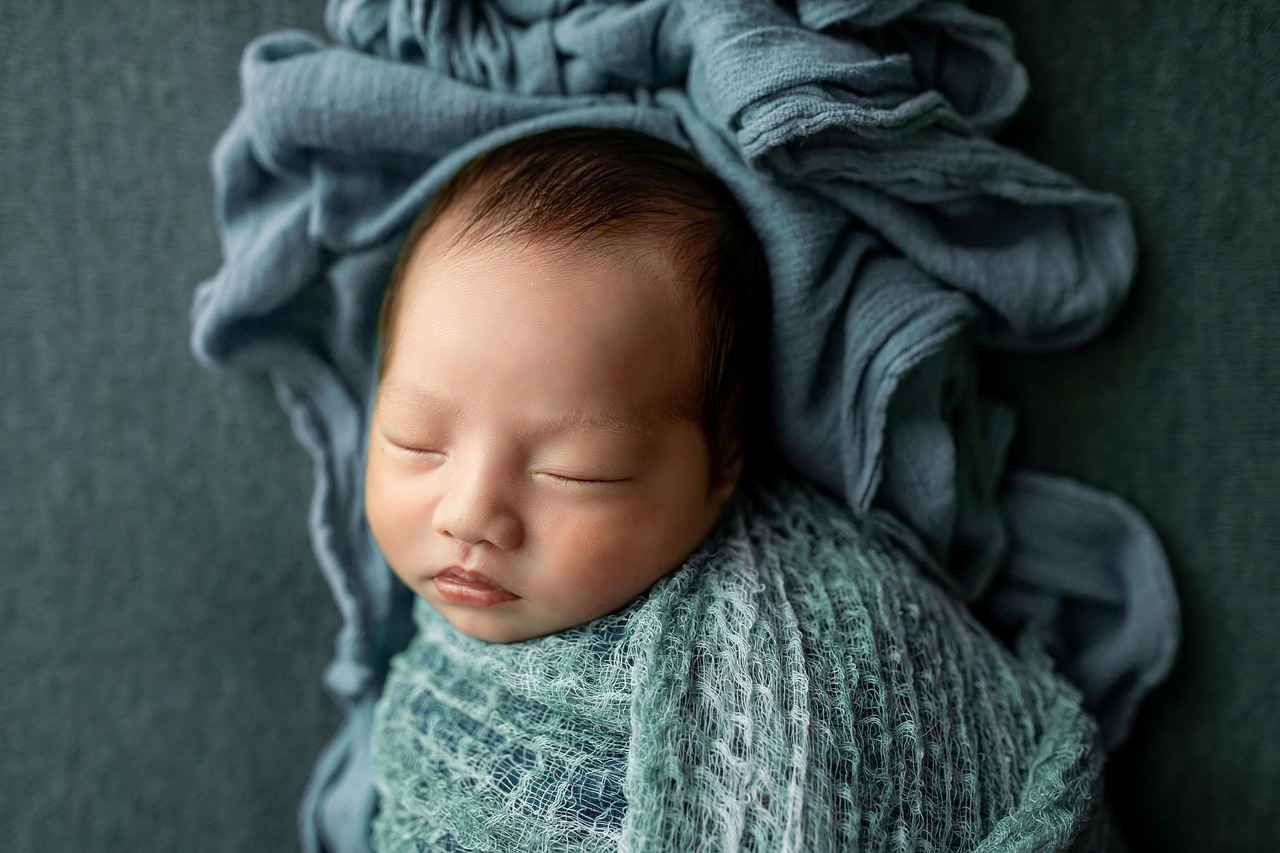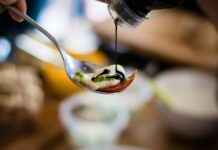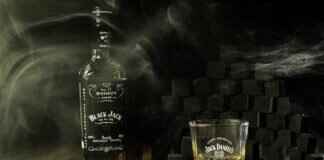This article delves into the art of designing custom t-shirts for baby showers, presenting a variety of tips, ideas, and inspiration for crafting memorable onesies that celebrate the joy of new beginnings.
Understanding the Importance of Custom Onesies
Custom onesies are not just clothing; they are cherished keepsakes for baby showers. These unique garments allow guests to express their joy in a personalized way, creating memorable moments that can be treasured for years to come.
Choosing the Right Fabric for Comfort
Selecting the appropriate fabric is essential for baby onesies. Soft, breathable materials such as cotton ensure comfort for the baby while providing durability for frequent washes.
- Popular Fabric Choices for Baby Onesies
- Cotton
- Organic Cotton
- Bamboo
Organic Cotton: A Sustainable Option
Organic cotton is cultivated without harmful chemicals, making it a safe choice for babies. It’s not only soft and breathable but also environmentally friendly, appealing to eco-conscious parents.
Bamboo Fabric: Benefits and Features
Bamboo fabric is naturally antibacterial and moisture-wicking, providing comfort and protection for babies. It’s incredibly soft, making it a luxurious choice for onesies.
Design Ideas for Baby Shower Onesies
Creativity is key when designing baby shower onesies. From playful graphics to heartfelt messages, unique designs can reflect the parents’ personalities and the theme of the shower.
Selecting the Right Colors and Themes
Choosing colors and themes that resonate with the parents and the overall aesthetic of the baby shower is essential. Popular themes include animals, nature, and whimsical designs.
Color Psychology in Baby Clothing
Understanding color psychology can enhance the design of baby onesies. Soft pastels evoke calmness, while bright colors energize the atmosphere, making them suitable for celebratory events.
Incorporating Themes into Onesie Designs
Integrating themes into onesie designs can create a cohesive look for the baby shower, based on nursery decor or the parents’ hobbies.
Printing Techniques for Custom Onesies
Exploring different printing techniques is essential for achieving the desired look and feel of custom onesies. Common methods include screen printing, heat transfer, and direct-to-garment printing.
- Screen Printing: Pros and Cons
- Heat Transfer vs. Direct-to-Garment Printing
Personalizing Onesies with Names and Dates
Adding personal touches like the baby’s name or birth date can make onesies even more special, creating a unique keepsake that families will cherish.
Conclusion: Creating Lasting Memories with Custom Onesies
Designing custom onesies for baby showers is a delightful way to celebrate new beginnings. By choosing the right materials, colors, and designs, you can create cherished keepsakes that families will treasure.
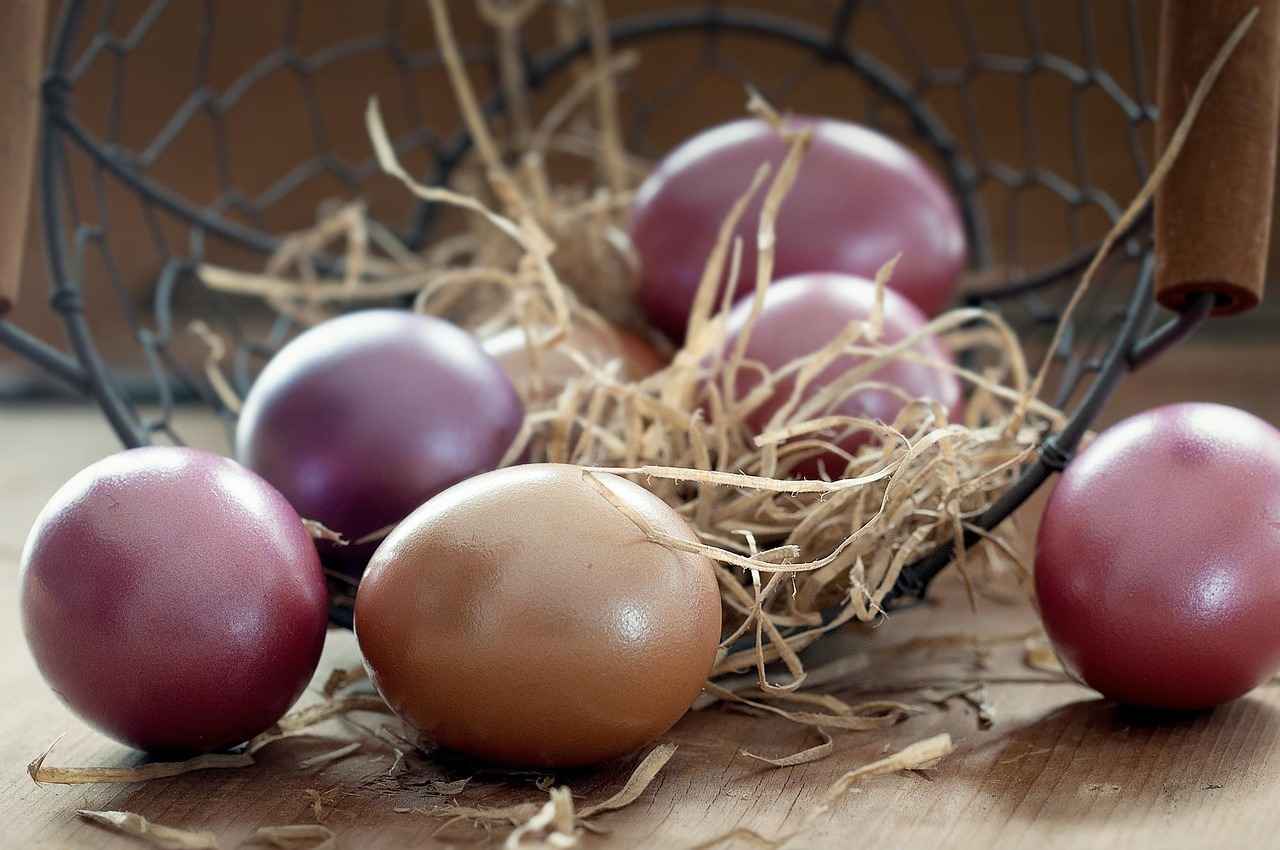
Understanding the Importance of Custom Onesies
Custom onesies are more than just adorable clothing for infants; they serve as memorable keepsakes during baby showers, allowing guests to celebrate the new arrival in a unique and creative way. These personalized garments can be designed with various themes, colors, and messages that resonate with the parents and the occasion. As a result, they not only provide a practical outfit for the baby but also become a cherished memento of a significant life event.
One of the most delightful aspects of custom onesies is their ability to spark conversations among guests. When attendees see a onesie featuring a clever slogan or a cute graphic, it often leads to laughter and shared stories, creating an atmosphere of joy and camaraderie. This interaction enhances the overall experience of the baby shower, making it more memorable for everyone involved.
Moreover, these onesies can be designed to reflect the parents’ personalities or the theme of the shower, adding a personal touch that standard baby clothing often lacks. For example, if the parents are avid travelers, a onesie featuring a globe or airplane can symbolize their adventures and aspirations for their child’s future. This level of customization makes the onesie a unique piece of art that families can treasure for years.
In addition to being a fun way to celebrate, custom onesies also serve a practical purpose. They can be worn by the baby during the event and later become a part of their wardrobe. As the child grows, these onesies can evoke fond memories of the day they were celebrated, making them a lasting keepsake that parents can look back on with affection.
In conclusion, custom onesies are vital in creating a warm and inviting atmosphere at baby showers. They not only celebrate the new arrival but also foster connections among guests, making the event truly unforgettable.
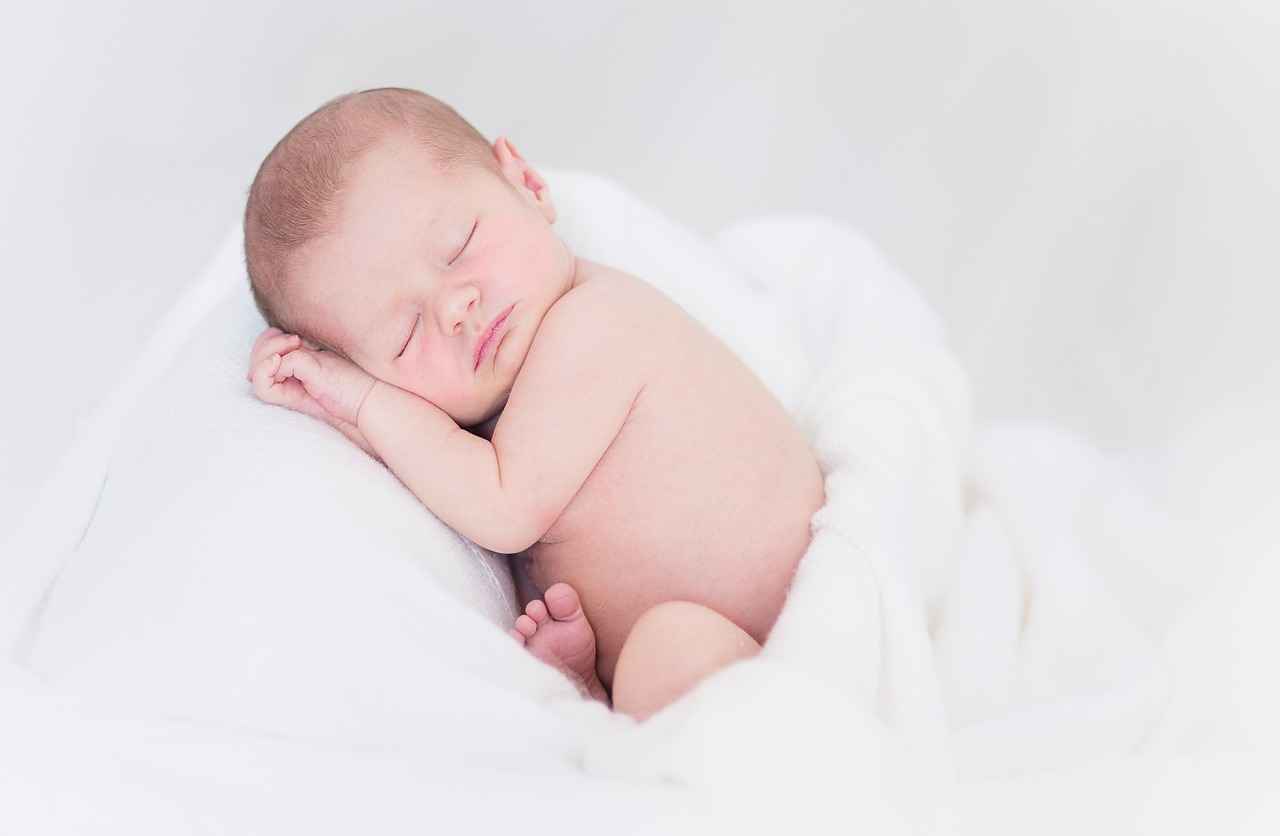
Choosing the Right Fabric for Comfort
Selecting the appropriate fabric for baby onesies is essential to ensure the utmost comfort for your little one. The skin of babies is incredibly delicate, making it vital to choose materials that are not only soft but also breathable. Fabrics like cotton are often recommended for their gentle touch and ability to allow air circulation, keeping babies cool and comfy throughout the day.
Moreover, durability is a key factor to consider. Babies tend to go through multiple outfit changes daily, so the fabric must withstand frequent washes without losing its shape or softness. High-quality cotton blends and organic options provide the necessary resilience while ensuring that the fabric remains gentle on sensitive skin.
Popular Fabric Choices for Baby Onesies
- Cotton: A staple for baby clothing, cotton is soft, breathable, and easy to care for.
- Organic Cotton: Grown without harmful pesticides, this fabric is perfect for eco-conscious parents and sensitive skin.
- Bamboo Fabric: Known for its natural antibacterial properties, bamboo is also incredibly soft and moisture-wicking.
When selecting fabrics, it’s also important to consider the season. Lightweight materials are ideal for warmer months, while thicker fabrics or fleece-lined options may be necessary for colder climates. Ensuring the right fabric choice not only enhances comfort but also contributes to your baby’s overall well-being.
Ultimately, the right fabric choice for baby onesies combines comfort, durability, and safety. By opting for soft, breathable materials, parents can provide a cozy environment for their newborns while celebrating their unique style through custom designs.
Popular Fabric Choices for Baby Onesies
When it comes to selecting the perfect fabric for baby onesies, the choice can significantly impact both comfort and safety. Parents want fabrics that are not only soft and gentle on a baby’s sensitive skin but also environmentally friendly. Here, we explore some of the most popular fabric choices for baby onesies.
- Cotton: Cotton is a classic choice for baby clothing due to its softness and breathability. It allows for air circulation, which helps keep babies comfortable, especially in warmer climates. Additionally, cotton is durable and can withstand frequent washing.
- Organic Cotton: For eco-conscious parents, organic cotton is an excellent option. This fabric is grown without the use of harmful pesticides or chemicals, making it a safe choice for babies. Organic cotton is just as soft as regular cotton but comes with the added benefit of being environmentally friendly.
- Bamboo: Bamboo fabric is gaining popularity for its unique properties. It is naturally antibacterial and moisture-wicking, which helps keep babies dry and comfortable. Bamboo is also incredibly soft, providing a luxurious feel against the skin, making it perfect for delicate infants.
- Modal: Modal is a semi-synthetic fabric made from beech tree pulp. It is known for its softness and breathability. Modal is also resistant to shrinking and fading, ensuring that baby onesies retain their shape and color after multiple washes.
- Hemp: Hemp is a sustainable fabric that is becoming more popular in baby clothing. It is naturally hypoallergenic and has excellent moisture-wicking properties. Hemp is also highly durable, making it a long-lasting choice for baby onesies.
In conclusion, when selecting fabrics for baby onesies, it is essential to consider not only the comfort and safety of the baby but also the environmental impact of the materials. Cotton, organic cotton, bamboo, modal, and hemp are among the best choices that cater to these needs, ensuring that babies are dressed in soft, safe, and sustainable fabrics.
Organic Cotton: A Sustainable Option
Organic cotton has gained significant attention as a sustainable fabric choice for baby clothing, particularly for onesies. This natural fiber is cultivated without the use of harmful pesticides or synthetic fertilizers, making it a safe and healthy option for infants. Parents increasingly prioritize the well-being of their children and the environment, and organic cotton aligns perfectly with these values.
One of the standout features of organic cotton is its softness. This fabric is gentle against a baby’s delicate skin, reducing the risk of irritation or allergic reactions. Additionally, organic cotton is breathable, which helps regulate body temperature and keeps babies comfortable, whether they are playing or napping.
Another compelling reason to choose organic cotton is its environmental benefits. The cultivation of organic cotton promotes biodiversity and healthier ecosystems. By avoiding synthetic chemicals, organic farming practices protect the soil, water sources, and surrounding wildlife. This makes organic cotton not just a choice for your baby, but also for the planet.
Moreover, organic cotton is often produced using sustainable farming practices, which can include crop rotation and composting. These methods help maintain soil health and reduce the carbon footprint associated with conventional cotton farming. By opting for organic cotton, parents are making a conscious decision to support sustainable agriculture.
In conclusion, organic cotton is an excellent choice for baby onesies, combining comfort, safety, and environmental responsibility. As eco-consciousness continues to rise among parents, organic cotton stands out as a fabric that not only cares for babies but also for the world they will grow up in.
Bamboo Fabric: Benefits and Features
Bamboo fabric has gained significant attention in recent years, particularly for its use in baby clothing. This eco-friendly material is not only sustainable but also offers numerous benefits that make it an ideal choice for infants.
One of the standout features of bamboo fabric is its natural antibacterial properties. This means that it helps to reduce the growth of bacteria, keeping your baby’s clothing fresher for longer. This is especially important for babies, who have delicate skin and are prone to rashes and irritations.
In addition to being antibacterial, bamboo fabric is also moisture-wicking. This means it can effectively draw moisture away from the skin, keeping your baby dry and comfortable. Whether it’s a hot day or a cozy nap time, bamboo fabric helps regulate body temperature, making it suitable for various climates.
Another appealing aspect of bamboo fabric is its incredibly soft texture. Unlike some traditional fabrics, bamboo is gentle against the skin, providing a luxurious feel that both parents and babies appreciate. This softness makes it a perfect choice for onesies, as it allows for unrestricted movement and comfort.
Moreover, bamboo is a highly sustainable material. The bamboo plant grows quickly and requires minimal water and no pesticides, making it an environmentally friendly option. This aligns with the values of many modern parents who are looking to make eco-conscious choices for their families.
In summary, bamboo fabric stands out for its unique combination of antibacterial properties, moisture-wicking abilities, and exceptional softness. These qualities not only provide comfort and protection for babies but also contribute to a more sustainable future. Choosing bamboo fabric for baby clothing, such as onesies, ensures that your little one enjoys the best in both comfort and care.
Design Ideas for Baby Shower Onesies
When it comes to celebrating the arrival of a new baby, designing custom onesies for baby showers can be a delightful and creative endeavor. These garments not only serve as adorable outfits for the little ones but also as cherished keepsakes for parents and guests alike. Here are some imaginative ideas to inspire your baby shower onesie designs:
- Playful Graphics: Incorporate fun and whimsical graphics such as animals, cartoon characters, or playful patterns. These designs can evoke joy and laughter, making them perfect for the festive atmosphere of a baby shower.
- Heartfelt Messages: Consider adding sweet and sentimental messages that reflect the parents’ journey. Phrases like “Welcome to the World” or “Little Miracle” can add a personal touch that resonates with everyone.
- Themed Designs: Align the onesie design with the overall theme of the baby shower. Whether it’s a nautical theme with anchors and whales or a floral theme with blooming flowers, cohesive designs enhance the celebration’s ambiance.
- Color Combinations: Use colors that reflect the parents’ preferences or the baby’s nursery. Soft pastels are calming, while vibrant colors can energize the atmosphere. Choose color palettes that complement each other for a cohesive look.
- Interactive Elements: Add unique features like glow-in-the-dark prints or reversible designs that can change with a simple flip. These interactive elements can engage guests and make the onesies even more memorable.
In conclusion, the possibilities for designing baby shower onesies are endless. By incorporating playful graphics, heartfelt messages, and thematic elements, you can create unique and memorable garments that celebrate the joy of new beginnings. Let your creativity shine as you design the perfect onesies for this special occasion!

Selecting the Right Colors and Themes
When it comes to baby showers, plays a pivotal role in creating a memorable atmosphere. The choices made in this area can significantly impact how guests perceive the event and how well it resonates with the parents-to-be. A well-thought-out theme not only enhances the visual appeal but also sets the tone for the celebration.
Popular Themes for Baby Showers
- Animal Kingdom: This theme often features cute and playful designs of various animals, making it appealing to both children and adults. From jungle animals to farm friends, the options are endless.
- Nature-Inspired: Emphasizing elements like flowers, trees, and landscapes, this theme brings a touch of serenity and beauty to the celebration, perfect for parents who appreciate the outdoors.
- Whimsical Designs: Incorporating elements of fantasy, such as fairy tales or magical creatures, can create a joyful and enchanting atmosphere that captivates guests of all ages.
Color Choices that Resonate
Choosing colors that resonate with both the parents and the overall aesthetic of the baby shower is essential. Soft pastels like mint green, baby blue, and blush pink are popular choices, as they evoke feelings of calmness and tenderness. Bright colors, on the other hand, can energize the space and create a festive vibe. It’s important to consider the parents’ preferences and the baby’s nursery colors to ensure a cohesive look.
Incorporating Personal Touches
Integrating personal elements into the theme can make the event even more special. This could include using the parents’ favorite colors or incorporating motifs that reflect their interests. For example, if the parents love the ocean, a beach-themed shower with blues and sandy colors could be a perfect fit.
In conclusion, selecting the right colors and themes is a vital aspect of planning a baby shower. By thoughtfully choosing elements that resonate with the parents and create a visually appealing environment, hosts can ensure a delightful experience for everyone involved.
Color Psychology in Baby Clothing
Color psychology plays a significant role in the design of baby clothing, particularly in onesies. Understanding how colors affect emotions and perceptions can help parents and designers create outfits that are not only visually appealing but also meaningful.
When it comes to baby clothing, the choice of color can influence the mood of both the baby and those around them. For instance, soft pastels such as light pinks, blues, and yellows are often associated with calmness and serenity. These colors can create a soothing environment for the baby, promoting relaxation and comfort.
On the other hand, vibrant colors like bright reds, yellows, and greens can energize a space and attract attention. These colors are particularly suitable for celebratory occasions such as baby showers or birthday parties. They can evoke feelings of joy and excitement, making them a popular choice for festive attire.
| Color | Emotional Effect | Best Uses |
|---|---|---|
| Soft Pastels | Calmness, Serenity | Everyday wear, Sleepwear |
| Bright Colors | Energy, Joy | Celebrations, Special occasions |
| Earth Tones | Stability, Comfort | Casual wear, Outdoor activities |
Moreover, incorporating thematic colors that resonate with the parents’ preferences or the nursery’s decor can enhance the overall aesthetic of the baby’s wardrobe. For example, if the nursery features a woodland theme, earthy greens and browns can create a harmonious look.
In conclusion, understanding color psychology is essential for designing baby onesies that not only look great but also contribute positively to the baby’s environment. By selecting the right colors, parents can create outfits that reflect their style while promoting the well-being of their little one.
Incorporating Themes into Onesie Designs
When planning a baby shower, integrating themes into onesie designs can significantly enhance the overall aesthetic of the event. A well-chosen theme not only ties the decorations together but also reflects the personality of the parents-to-be. Here are some ideas and tips for creating cohesive and memorable onesies that align with the shower’s theme.
- Nursery Decor: Consider the nursery’s color scheme and design elements. If the nursery features a woodland theme, onesies adorned with cute animal prints or nature-inspired graphics can create a harmonious look.
- Favorite Animals: Incorporating the parents’ favorite animals into the onesie design can add a personal touch. For instance, if they love elephants, onesies with playful elephant motifs can be a charming addition.
- Hobbies and Interests: Reflecting the parents’ hobbies can also make for unique designs. If the parents are avid travelers, consider onesies with globes, airplanes, or famous landmarks.
Moreover, using a consistent color palette across all onesies can further enhance the theme. Soft pastels work well for a gentle, serene atmosphere, while vibrant colors can energize the space and create a festive vibe. When selecting prints and graphics, aim for designs that resonate with the overall theme and are suitable for babies.
In conclusion, thoughtfully incorporating themes into onesie designs not only elevates the baby shower experience but also provides guests with a delightful keepsake that celebrates the joy of new life. By considering nursery decor, favorite animals, and the parents’ hobbies, you can create a cohesive and memorable look that will be cherished for years to come.
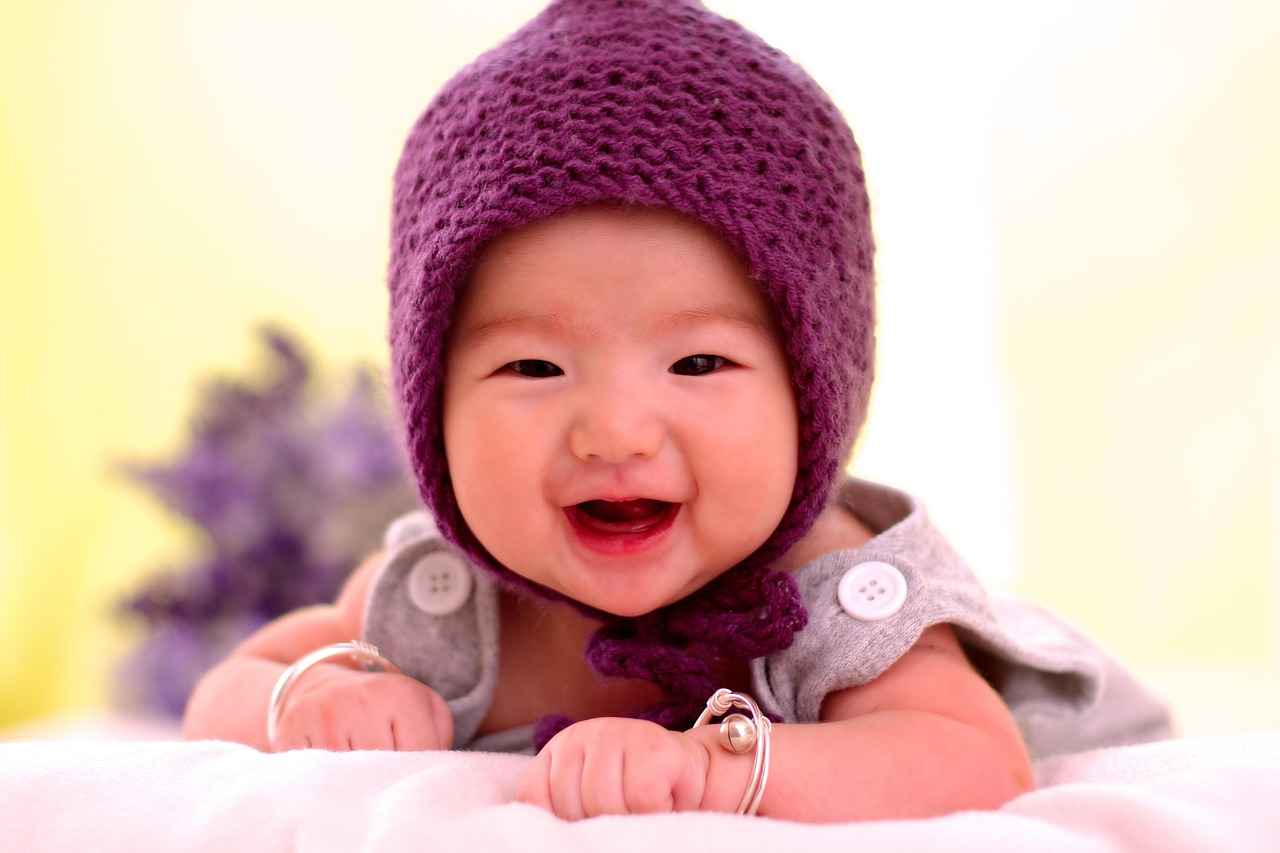
Printing Techniques for Custom Onesies
When it comes to designing custom onesies, exploring various printing techniques is crucial for achieving the desired aesthetic and tactile quality. Understanding the different methods available can help you make informed decisions that align with your creative vision and budget.
Common Printing Methods
- Screen Printing: This method is favored for its durability and ability to produce vibrant colors. It involves creating a stencil (or screen) and using it to apply layers of ink onto the fabric. While it is ideal for large orders due to lower costs per unit, it may not be as economical for smaller runs.
- Heat Transfer: This technique involves printing a design onto a special transfer paper and then applying heat to transfer the design onto the fabric. Heat transfer is versatile and allows for intricate designs, making it perfect for small batches or personalized items.
- Direct-to-Garment (DTG) Printing: DTG printing uses inkjet technology to print directly onto the fabric, offering the ability to produce complex designs with unlimited colors. This method is excellent for detailed artwork and is suitable for both small and large orders.
Choosing the Right Technique
Each printing method has its own set of advantages and disadvantages. For instance, while screen printing offers durability, it may not be suitable for designs with many colors or gradients. On the other hand, DTG printing can handle intricate designs but may have limitations in terms of fabric types.
Ultimately, the choice of printing technique should align with your specific needs, including design complexity, quantity, and budget. By carefully considering these factors, you can ensure that your custom onesies turn out exactly as envisioned.
Conclusion
In conclusion, understanding the various printing techniques available is essential for anyone looking to create custom onesies. By selecting the right method, you can achieve a beautiful, high-quality product that stands out and serves as a cherished keepsake for any baby shower.
Screen Printing: Pros and Cons
Screen printing is a widely used technique in the custom apparel industry, particularly for creating vibrant and durable designs on clothing. This method involves pushing ink through a stenciled mesh screen to produce a sharp image. While it offers numerous benefits, it also has some limitations that should be considered before making a decision.
- Durability: One of the most significant advantages of screen printing is its durability. The ink used is thick and adheres well to the fabric, resulting in designs that can withstand numerous washes without fading.
- Vibrant Colors: Screen printing allows for the use of bold and vibrant colors, making designs pop. This is particularly beneficial for brands looking to make a strong visual impact.
- Cost-Effective for Large Orders: For bulk orders, screen printing becomes more economical. The setup costs are spread across a larger number of shirts, making the per-unit price lower.
- Not Cost-Effective for Small Orders: One of the main drawbacks of screen printing is that it may not be the best option for small quantities. The initial setup costs can be high, making it less economical for orders of fewer than 20 items.
- Limited Detail: While screen printing is excellent for bold designs, it may not capture intricate details or gradients as effectively as other methods like digital printing.
- Longer Turnaround Time: The process can be time-consuming, especially for complex designs. This may not be ideal for last-minute orders.
In summary, screen printing is a popular choice for those looking to create durable and vibrant designs, especially for larger orders. However, understanding its limitations, particularly for small runs, is crucial in making an informed decision. By weighing the pros and cons, you can determine if screen printing aligns with your needs and budget.
Heat Transfer vs. Direct-to-Garment Printing
When it comes to customizing clothing, particularly for special events like baby showers, understanding the different printing techniques is essential. Two of the most popular methods are heat transfer and direct-to-garment (DTG) printing. Each method offers unique benefits and applications, making them suitable for various design needs.
| Feature | Heat Transfer | Direct-to-Garment Printing |
|---|---|---|
| Design Flexibility | Offers high flexibility for small runs and allows for a range of designs. | Enables intricate designs with unlimited color options. |
| Cost-Effectiveness | More economical for smaller quantities. | Can be more expensive for small runs due to setup costs. |
| Durability | Generally durable but can fade over time with washing. | Provides long-lasting prints that withstand multiple washes. |
| Application Process | Involves applying heat and pressure to transfer designs onto fabric. | Uses a specialized printer to apply ink directly onto the garment. |
Heat transfer is an excellent choice for those looking to create custom designs quickly and affordably. This method allows for a variety of materials and colors, making it ideal for small batches or one-off projects. It is particularly beneficial for designs that require bold graphics or text.
On the other hand, direct-to-garment printing excels in producing detailed and colorful designs. This method is perfect for larger orders where intricate artwork is needed, as it can replicate complex images with precision. The ability to print unlimited colors means that the creative possibilities are virtually endless.
In conclusion, the choice between heat transfer and direct-to-garment printing depends on your specific needs. For small runs and simpler designs, heat transfer is a fantastic option. However, for more elaborate designs that require a professional finish, direct-to-garment printing is the way to go. Understanding these differences will help you make an informed decision for your custom clothing projects.
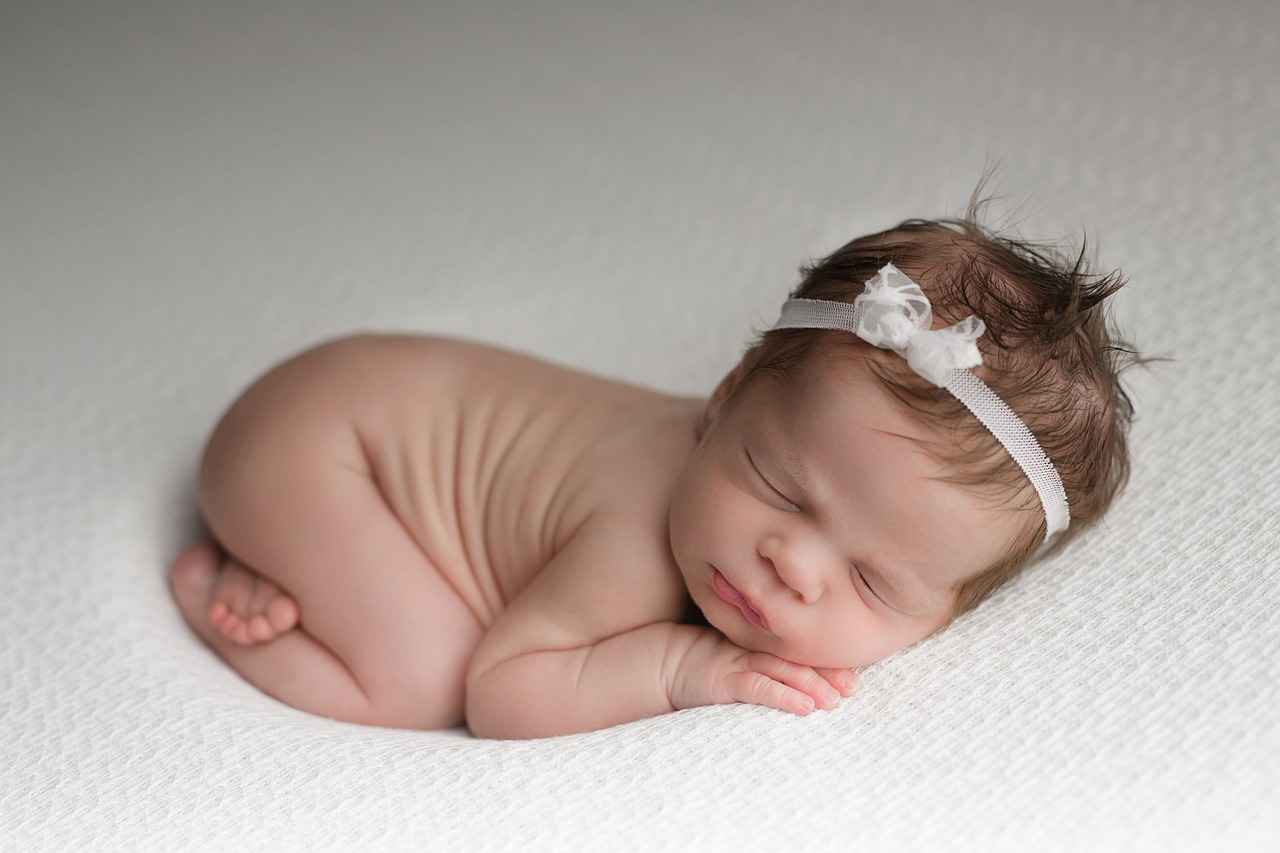
Personalizing Onesies with Names and Dates
Personalizing onesies for babies is an excellent way to create lasting memories and celebrate new life. By adding thoughtful details like the baby’s name or birth date, these garments transform into unique keepsakes that parents will treasure for years to come. Personalization not only enhances the aesthetic appeal of the onesie but also adds sentimental value, making it a cherished item in the family.
When considering personalization, it’s essential to think about various elements that can be integrated into the design:
- Names: Including the baby’s name prominently on the onesie can create a sense of ownership and identity right from the start.
- Birth Dates: Adding the birth date can commemorate the special day and serve as a wonderful reminder of the baby’s first moments.
- Custom Messages: Incorporating sweet phrases or quotes can add a personal touch, reflecting the parents’ sentiments.
Choosing the right font and color for personalization is equally important. Playful, fun fonts can evoke a sense of whimsy, while elegant scripts can convey sophistication. Colors should also be chosen to align with the overall theme of the baby shower or nursery. Soft pastels often work well for a gentle, calming effect, while brighter colors can make the design pop.
Additionally, there are several printing techniques available for adding personalization to onesies:
- Embroidery: Offers a textured, classic look that is durable and adds a touch of elegance.
- Screen Printing: Ideal for vibrant colors and designs, perfect for larger quantities.
- Heat Transfer: Allows for intricate designs and is great for smaller runs.
In conclusion, personalizing baby onesies with names and dates not only enhances their charm but also creates a unique keepsake that families will cherish. These thoughtful touches celebrate the joy of new beginnings and make for wonderful gifts at baby showers.
Choosing Fonts and Styles for Personalization
is a vital step in designing custom onesies that truly reflect the personality of the parents and the theme of the baby shower. The right font can significantly impact the overall aesthetic and emotional resonance of the garment. Here, we will explore various font styles and their implications, helping you make informed choices for your personalized designs.
When selecting fonts, consider the mood you wish to convey. For instance, playful fonts can add a whimsical touch, making them perfect for a light-hearted celebration. These fonts often feature rounded edges and fun embellishments, which can evoke feelings of joy and excitement. Examples include Comic Sans and Bubblegum Sans, which are ideal for designs that include cute graphics or playful messages.
On the other hand, if your design leans towards a more sophisticated theme, elegant script fonts can convey a sense of refinement. These fonts, such as Great Vibes or Allura, are characterized by their flowing lines and cursive style, making them suitable for more formal occasions or when you want to express a heartfelt sentiment. They work beautifully when paired with simple graphics or floral motifs.
Additionally, consider the readability of the font when making your selection. While artistic fonts can be visually appealing, they should not compromise the clarity of the message. Ensure that names and dates are easily legible, especially when printed on smaller onesies.
Lastly, combining different font styles can create a unique and personalized look. For example, you might use a bold, playful font for the baby’s name and a delicate script for the birth date. This contrast can add depth and interest to the design.
In conclusion, the choice of font and style for personalization is a crucial element in creating memorable and meaningful custom onesies. By thoughtfully selecting fonts that reflect the desired mood and ensuring readability, you can craft designs that will be cherished for years to come.
Where to Order Custom Onesies
When it comes to creating unique and personalized onesies for baby showers, there are numerous options available both online and locally. Engaging in thorough research can help you find the perfect service that meets your design needs while staying within your budget.
Here are some key points to consider when looking for custom onesie printing services:
- Online Platforms: Websites like Etsy, Zazzle, and Custom Ink offer a wide range of customizable options. You can choose from various templates or upload your own designs.
- Local Shops: Many local printing shops provide personalized service and the ability to see fabric samples. This can be particularly beneficial if you want to feel the material before making a decision.
- Price Comparison: Prices can vary significantly between different platforms and shops. Make sure to compare prices and look for any ongoing promotions or discounts.
- Customer Reviews: Reading reviews from previous customers can give you insight into the quality of the printing and the overall service experience. Look for feedback on durability, print quality, and customer support.
- Design Flexibility: Ensure the service you choose allows for sufficient design flexibility. Whether you want to incorporate specific colors, graphics, or text, the more options available, the better your final product will be.
In conclusion, finding the best place to order custom onesies involves careful research and consideration of various factors. By comparing prices, reading reviews, and exploring both online and local options, you can create a cherished keepsake that celebrates the joy of new beginnings.
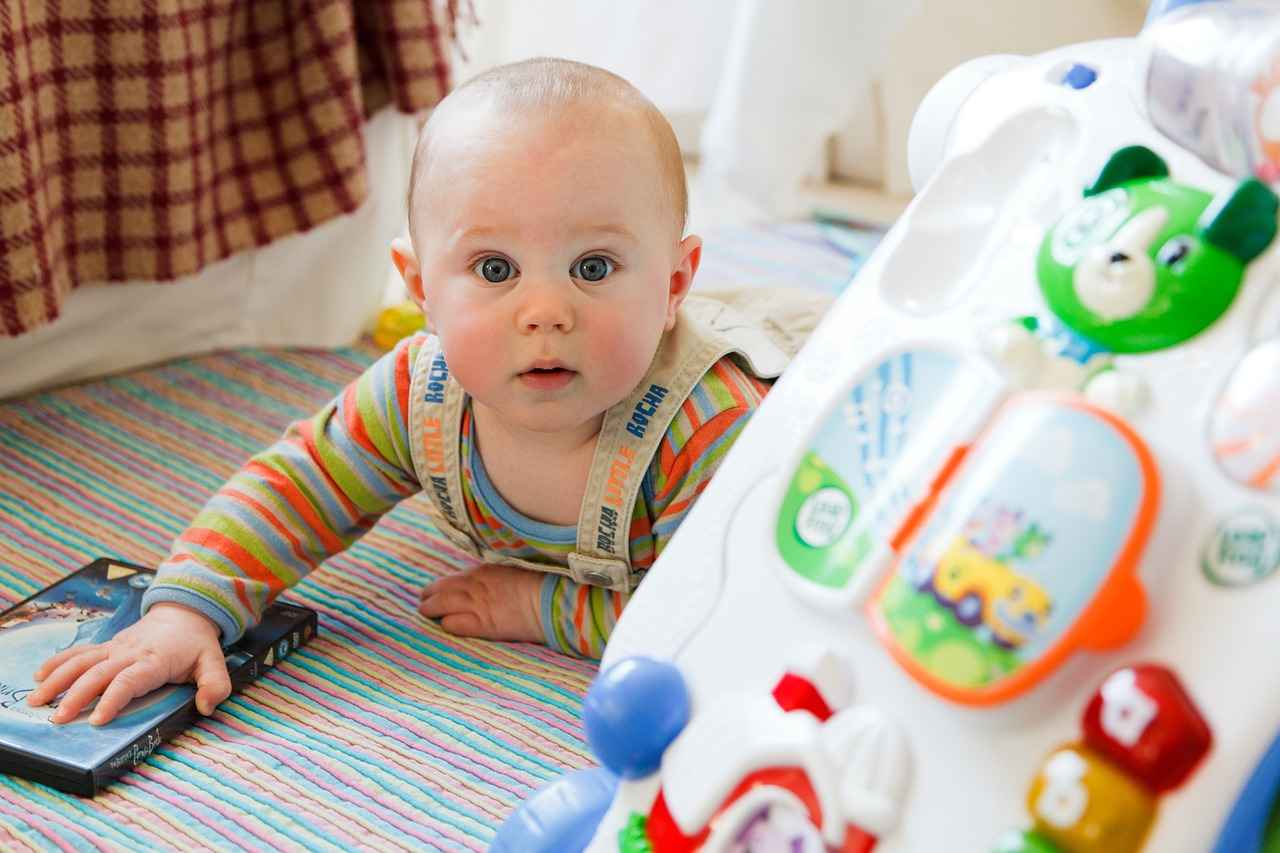
Conclusion: Creating Lasting Memories with Custom Onesies
Creating lasting memories with custom onesies is an exciting way to celebrate the arrival of a new baby. Custom onesies not only serve as unique gifts but also as cherished keepsakes that families will treasure for years to come. These personalized garments can capture the joy and anticipation surrounding a baby shower, making the event even more special.
When designing custom onesies, it’s essential to consider various factors that contribute to their appeal. Here are some key elements to keep in mind:
- Material Selection: Choosing soft, breathable fabrics like cotton or bamboo is crucial for ensuring the comfort of the baby. These materials are gentle on the skin and withstand regular washing, making them practical for everyday use.
- Color Choices: Colors play a significant role in the design of onesies. Soft pastels are often favored for their calming effect, while vibrant colors can add a playful touch. Consider the theme of the baby shower when selecting colors.
- Creative Designs: Incorporating fun graphics, quotes, or themes that reflect the parents’ personalities can make the onesies stand out. Whether it’s a favorite animal or a whimsical design, creativity is key.
- Personalization: Adding the baby’s name or birth date enhances the sentimental value of the onesie. Personalized items are often cherished more deeply as they hold special memories.
- Printing Techniques: Different printing methods, such as screen printing or direct-to-garment printing, can affect the final look of the onesies. Each technique has its advantages, so choose one that aligns with your design vision.
In conclusion, designing custom onesies for baby showers is a delightful way to celebrate new beginnings. By focusing on the right materials, colors, and creative designs, you can create memorable keepsakes that families will love and cherish for years to come. These unique garments not only enhance the joy of the occasion but also serve as lasting reminders of a special moment in time.
Frequently Asked Questions
- What materials are best for custom baby onesies?
When selecting materials for custom baby onesies, soft and breathable fabrics like cotton, organic cotton, and bamboo are ideal. These materials ensure comfort for the baby and durability for frequent washes.
- How can I personalize a onesie for a baby shower?
You can personalize a onesie by adding the baby’s name, birth date, or a special message. Using playful fonts or elegant scripts can enhance the overall design and make it a cherished keepsake.
- What printing techniques are available for custom onesies?
Common printing techniques for custom onesies include screen printing, heat transfer, and direct-to-garment printing. Each method has its unique benefits, so choose one that aligns with your design needs and budget.
- Are there specific themes I should consider for baby shower onesies?
Absolutely! Popular themes for baby shower onesies include animals, nature, and whimsical designs. Consider incorporating elements that reflect the parents’ personalities or nursery decor for a cohesive look.
- Where can I order custom onesies?
You can find custom onesie printing services through various online platforms or local shops. It’s wise to compare prices and read reviews to find the best fit for your design requirements.

